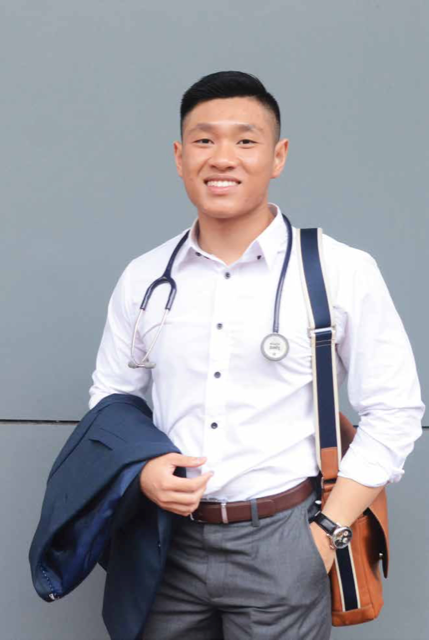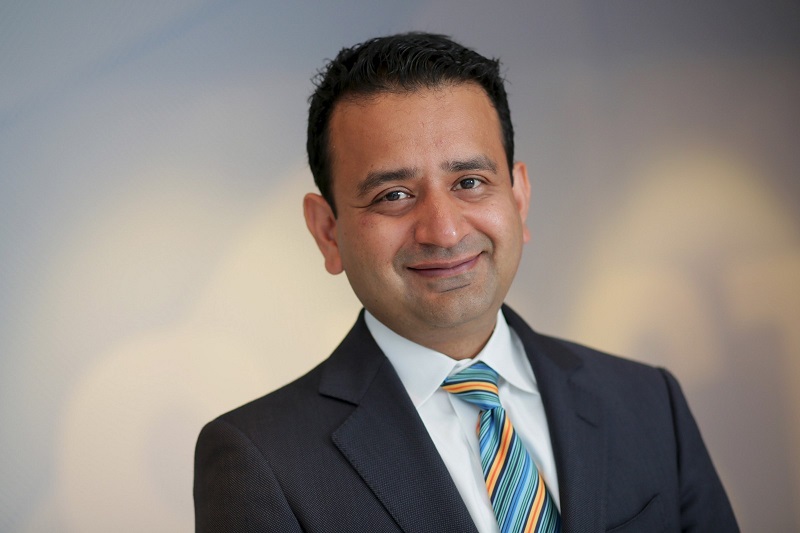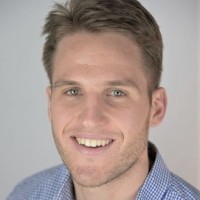In the first of our two-part series, Edward Pollitt explores how healthcare of the future will be very different.
What will healthcare look like in 2050?
Will we be treated by robotic doctors that utilise algorithms to assess our symptoms then dispense medication accordingly?
Or will it be business as usual?
The healthcare industry has been underpinned by humanity and face-to-face interaction for as long as it has existed.
But with data analytics now offering insights that an army of doctors couldn’t even imagine, the industry is poised to be turned in its head.
Here’s how data is changing everything.

Doctors are data analysts.
Through evaluating a combination of subjective and objective information they form a diagnosis, then prescribe appropriate treatment.
This is a fact not lost on Chief Data Scientist of health start-up Harrison-AI, Aengus Tran.
“Medicine is one of those very unique professions in that it is all about making decisions based on data,” he says. “There’s a very low tolerance for errors.”
“It’s an environment where a lot of decisions need to be made every single day and all of them are mission critical.”
Not just an entrepreneur, Tran is also a final year medicine student at the University of New South Wales.
It was through his studies that Tran first came up with Harrison-AI, which is now run by him and brother Dimitry.
Tran, who had previously taken an interest in how artificial intelligence (AI) can be used to predict lung and eye disease, was listening to a visiting lecture from Dr Simon Cooke, the Scientific Director at IVF Australia, a business of Virtus Health.
“He came and gave a talk about IVF and he showed us a time-lapse video of embryos developing,” Tran recalls. “In the video we can see how the embryo develops.”
“I asked him, ‘based on this video, how do you make a decision, which embryos do you put back?’”
“We don’t know – this is still so new,” Cooke responded to Tran.
Doctors have come up with various scoring systems to rank the different embryos based on their appearance, but the final decision essentially still comes down to gut instinct, Tran explains.
After seeing an opportunity and with his grounding in AI, Tran began to hustle.
“I think I can build you something that would look at this video and tell you which embryo to transfer,” he told the visiting IVF doctor.
Shortly after this fateful lecture, Tran found himself in Virtus Health's boardroom negotiating deals to secure IVF data from around the world.
“Probably 80% of the past nine months has been negotiating with different labs and figuring out data transfers. The actual AI happened within a couple of weeks,” he reflects.
“Going from the point where they gave me the data to when the model was superhuman took a day or two.”
Currently, IVF clinical pregnancy rates in Australia range from 41.8% per frozen embryo for patients under 30 years, to 18.1% per frozen embryo transfer leading to a live birth for patients over 40 years.
Harrison-AI’s ‘Ivy’ solution is looking to increase these rates through utilising machine learning and AI.
Now live in Sydney and Melbourne, the solution is already helping women become pregnant via AI-enhanced IVF treatment.
Using a three-dimensional assessment of the embryo’s growth, Ivy compares each embryo with previous data to identify corresponding pregnancy outcomes.
It gives each embryo an ‘EmbryoScore’, with the embryo with the highest score then selected and transferred.
Self-improving by nature of the AI, the technology will only get better as it is used more.
The same technology can also be used to help patients suffering various other health issues, such as lung problems and eye disease.

Aengus Tran from Harrison-AI. Source: Supplied
Cheap, fast and good
Growing up, Aengus and Dimitry were taught a lesson about decision-making by their father.
“Cheap, fast or good – you can only pick two,” he would tell the brothers.
Through developing Harrison-AI, Aengus and Dimitry have proven their father wrong.
“It’s a computer so it can run as fast as you like,” Aengus says.
“It’s cheap because it doesn’t cost anything. A pathologist or radiologist looking at these images gets paid millions of dollars a year because they spend ten years getting training. A computer can do it for free, just a couple of cents for electricity.
“And it’s arguably better. In many areas of healthcare, it has been shown that AI is more consistent and objective than humans.”
And the numbers don’t lie.
The success rate of a human picking a successful embryo is around 65%.
The discriminative power of Harrison-AI’s Ivy technology is 93%.
Replacing humans?
When the conversation turns to the topic of automation and healthcare, one might argue that by developing a powerful AI-based solution like Harrison-AI, Aengus is rendering his own medicine degree useless.
Why spend all these years studying to be a doctor only to be replaced by a robot after a few years?
But that’s not quite how he sees it.
Tran envisions a future healthcare industry where doctors utilise the power of AI to enhance overall service.
“Looking to the future, medicine to the patient will practically be the same,” he predicts. “You will still see a doctor, but instead of a doctor spending time and cognitive load thinking about and interpreting test results, they will spend more time speaking with you and understanding your problems.”
“All of the things that relate to making cold, hard decision based on data will be taken over by AI and it will do a better job than humans.”
He gives the example of an AI solution developed by Google last year, where a scan of the back of the eye is used to tell whether an individual is a smoker or not.
“Everyone thought this was amazing. But from a medical perspective this is useless – I could have just asked the patient,” he laughs.
“The role of the human doctors will be to build a very strong therapeutic relationship with the patients. That is supported by the incredible powers of AI.”
Hospitalising data
There were 11 million hospitalisations in Australia across the 2016-17 financial year.
This was up 4.1% from 2012-13, compared to the 1.6% population growth across that same time span.
What’s more, patients are staying in hospital for longer.
Total patient days increased from 27.7 million in 2012-13 to 31.0 in 2016-17 – growth of 2.2%.
Australia now ranks 10th in the world for overnight hospitalisations per 1,000 population.
How can data be used to alleviate the problems associated with increasingly overcrowded hospitals?
Like any ‘big data’ set, machine learning can help us find answers in the numbers.
Hospital bed tracking has the potential to eradicate the costs and delays associated with poor bed management.
But global technology giant Infosys is now looking at how machine learning can improve best practice in our hospitals.
The company has started to roll out its Hospital Bed Tracking and Analytics solution in hospitals around the world.
By combining information such as the historical data of ward crowding and current infection trends, the system can predict the availability of a certain bed, in a certain ward, at a certain time.
President and Head of Banking, Financial Services & Insurance, Healthcare and Life Sciences at business consultancy Infosys, Mohit Joshi, explains data analytics now has industry-wide applications.
“This is one of those underexploited areas,” he tells Information Age. “There has been a lot of focus on analytics as far as insurance is concerned. There has been a huge focus on data analytics when we’re talking about electronic health records.”
“But there hasn’t been that much of a focus on hospital bed management. This is a very specific activity.”
Infosys claims that the solution can deliver a 20% reduction on bed assignment time, a 15-30% reduction in bed occupancy time and a 20% reduction in outpatient conversions.
Considering many hospitals are now operating with occupancy above 100%, small improvements can make a substantial difference.
It’s an example of how automation – and removing human decision-making – can increase efficiency.
“The solution to this problem can easily come through data analytics and artificial intelligence, which is why we’ve built this solution,” Joshi says.
“It utilises current systems: your admissions systems, your transfer systems, your discharge systems and historical data in all these systems.
“Based on this you can create predictive analytics, you can do short-term and long-term forecasting, and this really goes a long way towards solving a core problem for hospitals.”
Joshi explains that even when we think a hospital is running optimally, it’s not.
“Even when systems are running at peak capacity, we find that there is room for at least 7 to 10% improvement.”
These data-enabled insights can move thousands of patients out of the emergency room and into a bed each year.
Live trials are still in the early stages and it’s too soon to give detailed feedback, according Joshi.
Similar to Harrison-AI’s Ivy solution, it will continually improve as it collects and processes more and more data.

President and Head of Banking, Financial Services & Insurance, Healthcare and Life Sciences at Infosys, Mohit Joshi. Source: Supplied
How far will automation go?
Earlier this year the Nagoya University Hospital in Japan deployed a small squad of robots to perform simple tasks during the night shift.
Though confined to delivering drugs to patients and collecting samples, these robots are helping reduce the workload of nurses.
Similar initiatives are now popping up around the world.
Accenture recently predicted robot-assisted surgery and virtual nursing assistants will add $US150 billion in value to the healthcare industry by 2026.
In Australia, Deloitte has recently completed a trial at the Prince of Wales Hospital in Sydney where a voice-activated bedside control system replaced the traditional button call system. The hands-free solution is particularly useful to patients with spinal injuries and also utilises AI to triage each request, so nurses can respond appropriately.
Partner of Deloitte’s Risk Advisory (Analytics) team, Kylie Watson, explains the system gives insight to how data will be used in the hospitals of tomorrow.
“From a risk perspective, we need to rethink how to improve data flows and technologies to optimise patient recovery,” she says.
“Predictive analytics, risk sensing tools, automation and AI can create on-demand patient experiences, and achieve efficiencies in the health care system, but more importantly they can allow caregivers to spend more time providing care and less time documenting it.”
Harrison-AI is another innovation which demonstrates how susceptible the industry currently is to automation.
Joshi highlights the equation that has created such a demand for automation.
“The problem that we have in healthcare is that demand is far outstripping supply. Across the world you have an ageing population and a shortage of nurses and physicians.”
He explains that initiatives like the robotic nurses in Japan could be particularly useful in Australia, where patients in regional areas are “potentially underserved”.
He also predicted the duties of these robots to soon extend beyond basic administrative tasks.
“There is an ability to use an Alexa-type device to make an initial diagnosis and then be able to refer the patient on to a doctor based on an initial set of questions and answers,” Joshi says.
“This again is a great use case for AI, it’s essentially a nurse-bot.”
These ‘nurse-bots’ could potentially be used as triage nurses in hospitals to initially assess patients and point out any red-flags to a human nurse, Joshi adds.
There are also numerous opportunities for automation to prevail in back-of-house proceedings.
Tasks such as claims administration, claims settlement and provider data management could all be automated, helping healthcare providers operate more proficiently and avoid potential compliance issues.
While much has been made of the threat of automation to human jobs in recent times, in terms of healthcare, automation is a necessity in ensuring the industry functions smoothly.
“In the healthcare space, we don’t see automation having a detrimental impact on employment, largely because the demand is so heavy,” he says.
“Over the next few years, if we don’t have solutions like this, the demand will become overwhelming.”
Part 2 of the Healthcare Special looking at security in health records will feature in next week’s edition of Information Age.




.JPG)





